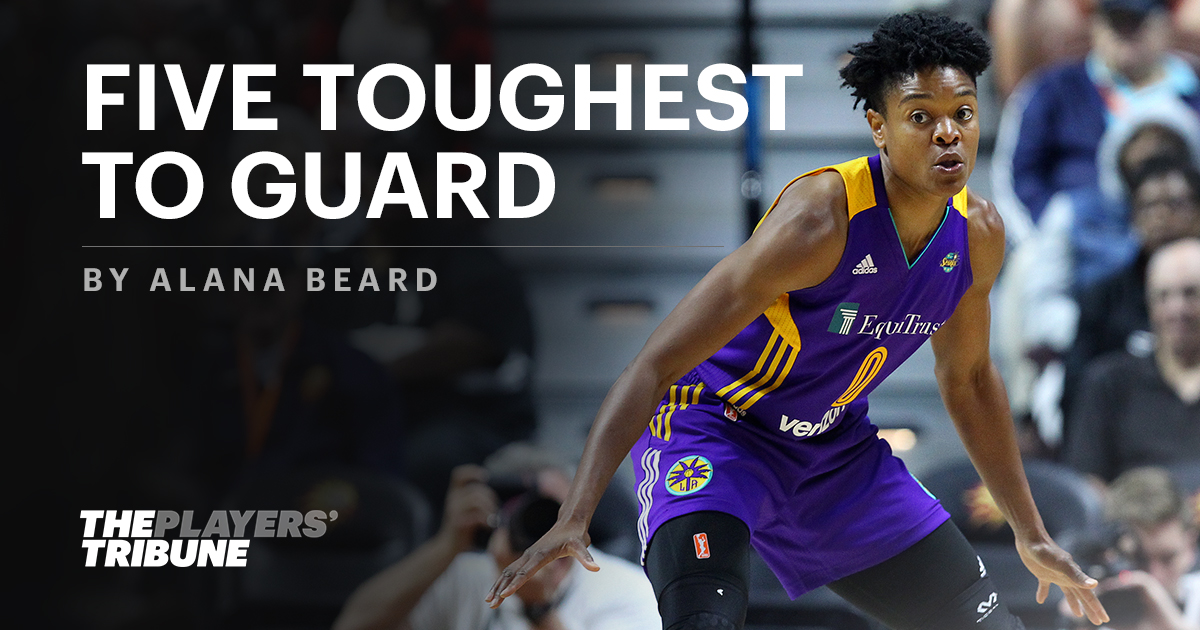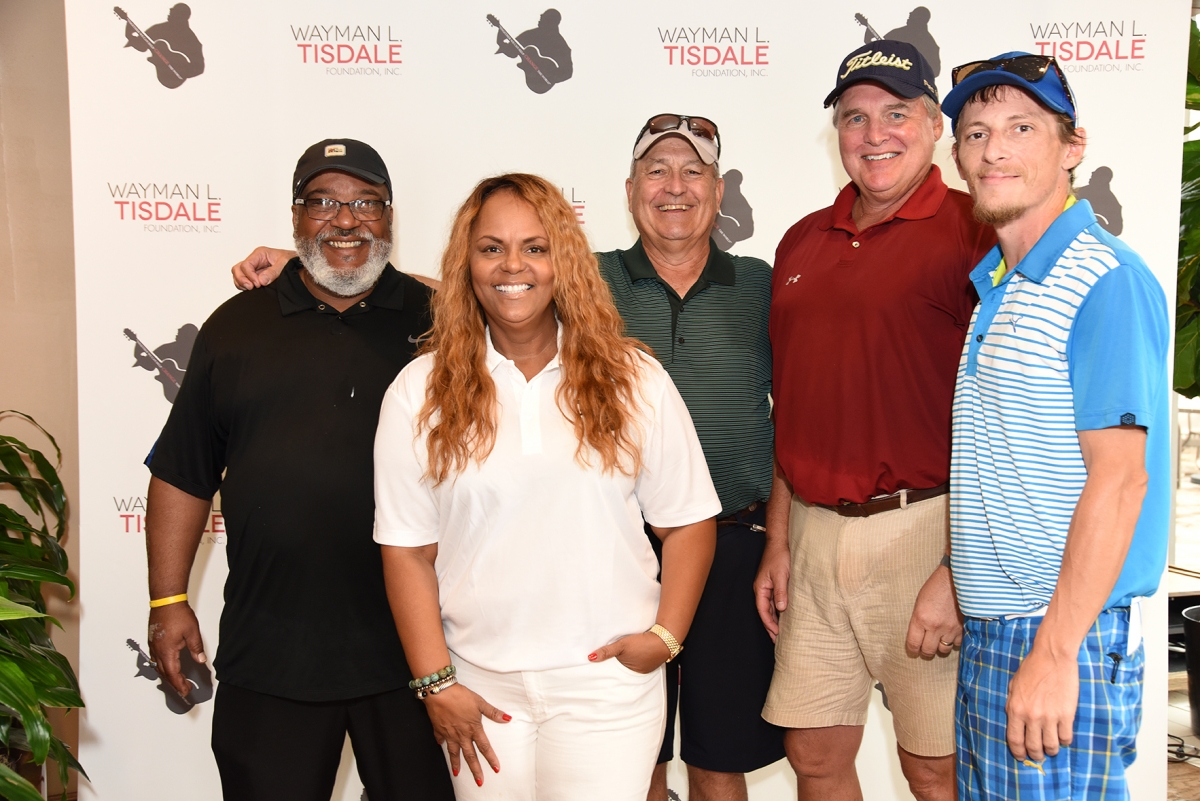
Coach Agler and I have this look we give each other.
He knows how much I hate it when a player scores on me. Hate it. When it happens, I look over to him, and he looks at me, and just kind of nods. He knows what I’m thinking.
He says the same thing every time: “Make it tough! Stay in plays!”
I used to always want to make the big play — the big steal, the big block. But great defense isn’t always flashy — it’s work. Unrelenting work. This year, Coach has reminded me of that. And that sometimes, players are going to make shots. That’s O.K., as long as I make it the toughest shot possible.
That’s been my mentality this year for the Sparks: Make every shot someone takes the hardest one they’ve ever taken.
Now, we’ve got the playoffs coming up and a championship to work toward. So, Players’ Tribune, you know I can’t give away all my secrets. But you asked for my list of the five toughest players to guard and I’m about the people.
In no particular order:
 PHOTO BY ALLEN EINSTEIN/NBAE/GETTY IMAGES
PHOTO BY ALLEN EINSTEIN/NBAE/GETTY IMAGES
Deanna Nolan
Deanna Nolan was my wake-up call.
I’ve always taken pride in my defense — from middle school to high school to Duke. I expected a tough adjustment when I got to the WNBA. The players are bigger, faster, more developed. At first, I was cruising. I got this, I thought.
Then I guarded Tweety.
Her footspeed was unreal, especially without the ball. She was so good at running off screens or a floppy action. ( A floppy action is when two guards are screening for one another on the baseline, and then sprint out to the wings.) During a pick-and-roll, she’d take perfect advantage of the screen and elevate for the shot. Because she was so dangerous off the ball, my goal was to deny it to her at every opportunity.
But Tweety was too experienced, too savvy a vet for me. I was in Washington when she was in Detroit, so we faced each other a lot. I remember the anxiety I would feel before every game against her. I’m a perfectionist. I want to do everything right. But Deanna just had a way of making me do everything wrong.
Still, for all of that frustration, she also taught me a lot. If Deanna’s screener got a piece of me, that was it — she’d already be shooting. That meant I had to get better at avoiding screens, and to this day, I pride myself on that ability. A lot of that has to do with knowing the plays beforehand.
For example, If I know that a floppy action is coming, I’ll position myself behind my opposition so that I don’t get caught on the screen. So by the time the other guard comes across the baseline out to the wing, and they catch the ball, I’m gonna be right up on them. That’s if they can even catch the ball.
 PHOTO BY LEON BENNETT/GETTY IMAGES
PHOTO BY LEON BENNETT/GETTY IMAGES
Riquna Williams
I’m happy I don’t have to play against Riquna Williams.
This year, during training camp, Coach Agler had us run a zigzag drill. Here’s the basics: two players start on the baseline, facing each other. One player has the ball, the other player’s defending. When Coach says, “Go,” the ball handler zigzags to half court, with the defender guarding her the entire time. I was matched up with Riquna, who had just joined the Sparks.
Coach said the word, and after only a few dribbles, Riquna blew by me to the other baseline. She did that the next time, too. And the next time. And the next time. She beat me every. single. time. And there was nothing I could do about it.
I’ve never seen a player as explosive as her. Deanna was explosive, but Riquna’s explosive in a different way. She does this thing where, one moment she’s just jogging down the court, almost lulling you to sleep, and the next you’re eating her dust. She just has this … switch that she can turn off and on at any moment.
The only way to deal with that kind of explosiveness is to pray that your teammates are behind you … and paying attention. Riquna is one of those players who always keeps you guessing, forcing you to continuously adjust your original defensive plan. When she played for the Tulsa Shock, we weren’t sure whether to go under or over the screen. If we went over the screen, she was going to cut down the lane and score easily. If we went under, she’d just pull up for three. There’s a reason she holds the WNBA single-game scoring record with 51 points.
Did you know that? Most people don’t.
 PHOTO BY RINGO H.W. CHIU/AP IMAGES
PHOTO BY RINGO H.W. CHIU/AP IMAGES
Cappie Pondexter
In a way, I grew up with Cappie. We played against each other in college, and she was (and still is) one of my toughest guards.
Riquna and Deanna are explosive. But Cappie? Cappie is just so smooth — and in a way you don’t often see in female athletes. When she touches the ball, you do one thing: pray. She will find a way to get to the basket or she’ll pull up and knock down a mid-range shot right in your face. Rude.
I still can’t believe Phoenix broke up that Cappie-Diana Taurasi one-two, man. That was a dynasty in the making, I’m telling you.
Speaking of …
 PHOTO BY LEON BENNETT/GETTY IMAGES
PHOTO BY LEON BENNETT/GETTY IMAGES
Diana Taurasi
At 35, Diana Taurasi is still the hardest player to defend in this league. I’ve been playing against her for a long time (since college), but no matter how many times I’ve faced her, it doesn’t get any easier.
Here’s the great debate about defending Dee: Is it tougher to guard her when she’s at the one, or when she’s at the two?
See, when Diana’s playing the two and I’m guarding her, my back isn’t to everyone — I can see everything happening. I know when screens are coming, I can see and hear the point guard calling out the play, and I can call out those plays to the rest of my team.
But when Diana’s at the one, I’m a lot more dependent on my ears than my eyes. I don’t know what’s coming behind me. Even though our team is good at communicating on defense, I’d still rather be calling things out than listening.
You also have to factor in how dangerous she is with the ball in her hands. She can shoot, drive and dish with the best of them. You never know what she’s going to do. At the two, I can at least work to keep the ball out of her hands, which limits her options. Don’t get me wrong, that’s not an easy task either, but it’s at least a little easier. (It’s really hard.)
Diana forces you to give up some things in order to better defend her. For example, if she’s coming off of a down screen, we know that we may potentially give up that post player’s roll or pop, because we want to keep the ball out of Diana’s hands. Or, we want to force her to make a tough shot. We understand that if she gets going, her team gets going. So, we’re O.K. giving up a shot or two to make sure Diana doesn’t get the ball.
I’m actually still trying to figure out who has the quicker release: Dee, or the next and final player on this list.
 PHOTO BY HARRY HOW/GETTY IMAGES
PHOTO BY HARRY HOW/GETTY IMAGES
Maya Moore
Maya Moore should never touch the ball.
That’s my mentality when I’m going up against her. She depends a lot her teammates creating opportunities for her to get the ball, so my job is to completely deny her.
Maya doesn’t stop moving. She comes off screens extremely well. She only needs a half step, if that, to get the shot up. You have to be right on her back, in the play with her from the very beginning.
She’s also dangerous in the post. She has this post-up, turnaround to the left that’s basically unblockable — it’s a fadeaway. You simply can’t let her post up, because once she touches it, she’s scoring.
The Minnesota Lynx were the reigning champs when I first came to the Sparks, in 2012, and in the first few matchups against them, Maya had my number. But I’ve grown against her over the years. I understand her and her game better now. I know I’m never going to completely deny her the ball, but I can make sure she’s outside of her comfort zone.
And if she still makes the shot, after all that?
I mean, c’mon.
It’s Maya Moore.











